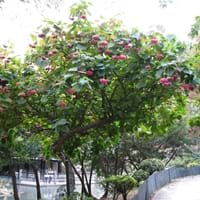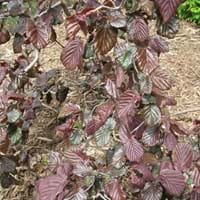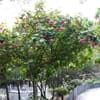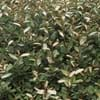Life Span
Perennial
Annual
Origin
Eastern Africa, Madagascar
Europe, Northern Africa, Western Asia
Types
Not Available
Shrub
Habitat
gardens, Screen Cottage and Informal Garden
Woods
USDA Hardiness Zone
9-15
4-8
Sunset Zone
H1, H2, 22, 23, 24
2a, 2b, 3a, 3b, 4, 5, 6, 7, 8, 9, 14, 15, 16, 17, 18, 19, 20
Habit
Oval or Rounded
Thicket/Colonizing
Flower Color
Pink, Hot Pink, Magenta, Rose
Yellow
Flower Color Modifier
Not Available
Not Available
Fruit Color
Not Available
Brown
Leaf Color in Spring
Green, Light Green
Green
Leaf Color in Summer
Green
Green, Dark Green
Leaf Color in Fall
Green
Yellow, Green
Leaf Color in Winter
Green
Not Available
Plant Season
Spring, Winter
Spring, Summer, Fall, Winter
Sunlight
Full Sun, Partial Sun
Full Sun, Partial Sun, Partial shade
Type of Soil
Loam, Sand
Clay, Loam, Sand
The pH of Soil
Acidic, Neutral
Acidic, Neutral, Alkaline
Soil Drainage
Well drained
Well drained
Bloom Time
Early Spring, Spring, Winter, Late Winter
Early Spring, Spring, Late Winter
Repeat Bloomer
Not Available
No
Tolerances
Drought
Not Available
Where to Plant?
Ground, Pot
Ground, Pot
How to Plant?
Semi-hardwood and hardwood cuttings, Stem Cutting
Grafting
Plant Maintenance
Medium
Medium
Watering Requirements
Average Water Needs, Do Not over Water, Requires regular watering
Average Water Needs, Do Not over Water
In Summer
Lots of watering
Lots of watering
In Spring
Moderate
Moderate
In Winter
Average Water
Average Water
Soil pH
Acidic, Neutral
Acidic, Neutral, Alkaline
Soil Type
Loam, Sand
Clay, Loam, Sand
Soil Drainage Capacity
Well drained
Well drained
Sun Exposure
Full Sun, Partial Sun
Full Sun, Partial Sun, Partial shade
Pruning
Remove damaged leaves, Remove dead branches, Remove dead leaves
Remove damaged leaves, Remove dead branches, Remove dead leaves
Fertilizers
All-Purpose Liquid Fertilizer
All-Purpose Liquid Fertilizer
Pests and Diseases
Red blotch
Red blotch
Plant Tolerance
Drought
Drought
Flower Petal Number
Not Available
Not Available
Foliage Texture
Coarse
Coarse
Foliage Sheen
Not Available
Matte
Attracts
Butterflies
Not Available
Allergy
Not Available
Not Available
Aesthetic Uses
Cottage Garden, Formal Garden, Showy Purposes
Showy Purposes
Beauty Benefits
Not Available
Not Available
Environmental Uses
Air purification
Air purification
Medicinal Uses
Not Available
Minerals, Rich in protein, tonic in pregnancy, Vitamin E
Part of Plant Used
Flowers
Fruits, Leaves, Seeds, Wood
Other Uses
Dried heads are used in floristry, Grown for shade
Culinary use, Used for its medicinal properties
Used As Indoor Plant
No
No
Used As Outdoor Plant
Yes
Yes
Garden Design
Hedges, Mixed Border, Screening, Wind Break, Tropical
Feature Plant, Foundation, Mixed Border, Topiary, Bonsai, Espalier
Botanical Name
DOMBEYA wallichii
CORYLUS avellana 'Contorta'
Common Name
Pinkball, Pink ball tree, Tropical hydrangea
common hazel
In Hindi
Pink Ball Tree
contorted filbert
In German
Pink Ball Tree
contorted filbert
In French
Pink Ball Tree
noisetier contorsionné
In Spanish
Pink Ball Tree
avellana contorsionada
In Greek
Pink Ball Tree
παραμορφωμένες φουντουκιού
In Portuguese
Pink Ball Tree
filbert contorcido
In Polish
Dombeja Wallicha
wykrzywioną leszczyna
In Latin
Pink Ball Tree
contortis Avellanam
Phylum
Tracheophyta
Magnoliophyta
Class
Magnoliopsida
Magnoliopsida
Family
Sterculiaceae
Betulaceae
Clade
Angiosperms, Eudicots, Rosids
Angiosperms, Eudicots, Rosids
Tribe
Not Available
Not Available
Subfamily
Dombeyoideae
Not Available
Number of Species
Not Available
Not Available
Season and Care of Pink Ball Tree and Contorted Filbert
Season and care of Pink Ball Tree and Contorted Filbert is important to know. While considering everything about Pink Ball Tree and Contorted Filbert Care, growing season is an essential factor. Pink Ball Tree season is Spring and Winter and Contorted Filbert season is Spring and Winter. The type of soil for Pink Ball Tree is Loam, Sand and for Contorted Filbert is Clay, Loam, Sand while the PH of soil for Pink Ball Tree is Acidic, Neutral and for Contorted Filbert is Acidic, Neutral, Alkaline.
Pink Ball Tree and Contorted Filbert Physical Information
Pink Ball Tree and Contorted Filbert physical information is very important for comparison. Pink Ball Tree height is 550.00 cm and width 240.00 cm whereas Contorted Filbert height is 180.00 cm and width 180.00 cm. The color specification of Pink Ball Tree and Contorted Filbert are as follows:
Pink Ball Tree flower color: Pink, Hot Pink, Magenta and Rose
Pink Ball Tree leaf color: Green and Light Green
Contorted Filbert flower color: Yellow
- Contorted Filbert leaf color: Green
Care of Pink Ball Tree and Contorted Filbert
Care of Pink Ball Tree and Contorted Filbert include pruning, fertilizers, watering etc. Pink Ball Tree pruning is done Remove damaged leaves, Remove dead branches and Remove dead leaves and Contorted Filbert pruning is done Remove damaged leaves, Remove dead branches and Remove dead leaves. In summer Pink Ball Tree needs Lots of watering and in winter, it needs Average Water. Whereas, in summer Contorted Filbert needs Lots of watering and in winter, it needs Average Water.





